Related Research Articles
1033 Simona, provisional designation 1924 SM, is a stony Eoan asteroid from the outer regions of the asteroid belt, approximately 20 kilometers in diameter. The asteroid was discovered by George Van Biesbroeck in 1924, who named it after his daughter Simona.
1068 Nofretete, provisional designation 1926 RK, is a stony asteroid from the background population in the outer asteroid belt, approximately 23 kilometers in diameter. It was discovered on 13 September 1926, by Belgian astronomer Eugène Delporte at the Royal Observatory of Belgium in Uccle. The asteroid was named after the Ancient Egyptian Queen Nefertiti by its German name "Nofretete". The near-Earth asteroid 3199 Nefertiti is also named after her.
1124 Stroobantia, provisional designation 1928 TB, is a metallic asteroid from the outer region of the asteroid belt, approximately 25 kilometers in diameter. It was discovered on 6 October 1928, by Belgian astronomer Eugène Delporte at Uccle Observatory in Belgium. It is named for astronomer Paul Stroobant.
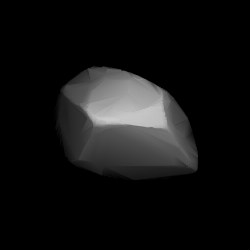
1127 Mimi is a dark background asteroid from the central regions of the asteroid belt. It was discovered on 13 January 1929, by Belgian astronomer Sylvain Arend at the Royal Observatory of Belgium in Uccle. The carbonaceous C-type asteroids (CX) has a rotation period of 12.7 hours and measures approximately 47 kilometers in diameter. Through a glitch in the naming process, the asteroid received the name "Mimi" instead of "Robelmonte" as originally intended by the discoverer.
1145 Robelmonte, provisional designation 1929 CC, is a Vestian asteroid from the inner regions of the asteroid belt, approximately 23 kilometers in diameter.

1652 Hergé, provisional designation 1953 PA, is a stony Florian asteroid from the inner regions of the asteroid belt, approximately 9 kilometers in diameter. It was discovered on 9 August 1953, by Belgian astronomer Sylvain Arend at the Royal Observatory of Belgium in Uccle, Belgium. It was later named after Belgian cartoonist Hergé.
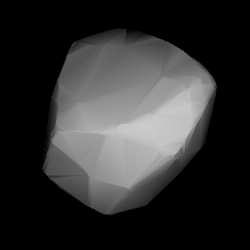
1457 Ankara, provisional designation 1937 PA, is a stony asteroid from the central region of the asteroid belt, approximately 18 kilometers in diameter. It was discovered on 3 August 1937, by German astronomer Karl Reinmuth at Heidelberg Observatory in southwest Germany, and later named for the Turkish capital city of Ankara.
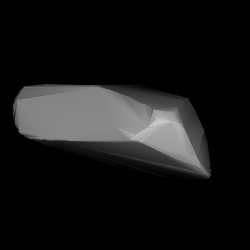
1286 Banachiewicza is an elongated Eos asteroid from the outer regions of the asteroid belt. It was discovered on 25 August 1933, by Belgian astronomer Sylvain Arend at the Royal Observatory of Belgium in Uccle. The stony S-type asteroid has a rotation period of 8.6 hours and measures approximately 21 kilometers in diameter. It was named after Polish astronomer Tadeusz Banachiewicz.
1570 Brunonia, provisional designation 1948 TX, is a stony asteroid of the Koronis family from the outer regions of the asteroid belt, approximately 12 kilometers in diameter. It was discovered on 9 October 1948, by Belgian astronomer Sylvain Arend at the Royal Observatory of Belgium in Uccle. The S-type asteroid is likely elongated and has a longer-than-average rotation period of more than 48 hours. It was named for Brown University in Rhode Island, United States.

1683 Castafiore, provisional designation 1950 SL, is a carbonaceous background asteroid from the central region of the asteroid belt, approximately 21 kilometers in diameter. It was discovered on 19 September 1950, by Belgian astronomer Sylvain Arend at Royal Observatory of Belgium in Uccle, Belgium, and named after the character Bianca Castafiore from The Adventures of Tintin.
1707 Chantal, provisional designation 1932 RL, is a stony background asteroid from the Florian region in the inner asteroid belt, approximately 7.5 kilometers in diameter. It was discovered on 8 September 1932, by astronomer Eugène Delporte at the Royal Observatory of Belgium in Uccle. The S-type asteroid has a rotation period of at least 10 hours. It was named for Chantal, the niece of Belgian astronomer Georges Roland.

1555 Dejan, provisional designation 1941 SA, is an asteroid from the background population of the central regions of the asteroid belt, approximately 22 kilometers in diameter. It was discovered on 15 September 1941, by Belgian astronomer Fernand Rigaux at the Royal Observatory of Belgium in Uccle. The asteroid was named after Dejan Đurković, son of Serbian astronomer Petar Đurković.

1848 Delvaux is a stony Koronis asteroid from the outer region of the asteroid belt, approximately 17 kilometers in diameter. It was discovered on 18 August 1933, by Belgian astronomer Eugène Delporte at the Royal Observatory of Belgium in Uccle, Belgium. It was later named after astronomer Georges Roland's sister-in-law.

1576 Fabiola, provisional designation 1948 SA, is a Themistian asteroid from the outer regions of the asteroid belt, approximately 27 kilometers in diameter. It was discovered on 30 September 1948, by Belgian astronomer Sylvain Arend at the Royal Observatory of Belgium in Uccle. The asteroid was named after Queen Fabiola of Belgium.
1199 Geldonia is an Eoan asteroid from the outer regions of the asteroid belt, approximately 32 kilometers in diameter. It was discovered on 14 September 1931, by Belgian astronomer Eugène Delporte at the Royal Observatory of Belgium in Uccle. The asteroid was named after the Belgian town of Jodoigne.
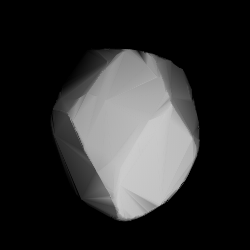
1281 Jeanne is a dark asteroid from the background population of the intermediate asteroid belt. It was discovered on 25 August 1933, by astronomer Sylvain Arend at the Royal Observatory of Belgium in Uccle, who named it after his daughter, Jeanne. The likely P-type asteroid has a rotation period of 15.2 hours and measures approximately 22 kilometers in diameter.
1261 Legia, provisional designation 1933 FB, is a dark Themistian asteroid from the outer regions of the asteroid belt, approximately 32 kilometers in diameter. It was discovered on 23 March 1933, by astronomer Eugène Delporte at the Royal Observatory of Belgium in Uccle. The asteroid was named for the Belgian city of Liège (Luke).
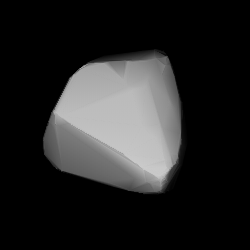
1361 Leuschneria, provisional designation 1935 QA, is a carbonaceous asteroid from the outer regions of the asteroid belt, approximately 30 kilometers in diameter. It was discovered on 30 August 1935, by Belgian astronomer Eugène Delporte at Uccle Observatory in Belgium, and named after American astronomer Armin Otto Leuschner.
1605 Milankovitch, provisional designation 1936 GA, is an Eoan asteroid from the outer region of the asteroid belt, approximately 31 kilometers in diameter. It was named after Serbian scientist Milutin Milanković.
1625 The NORC is a carbonaceous asteroid from the outer region of the asteroid belt, approximately 55 kilometers in diameter. It was discovered on 1 September 1953, by Belgian astronomer Sylvain Arend at the Royal Observatory of Belgium in Uccle, Belgium. It was named after the IBM Naval Ordnance Research Calculator (NORC).
References
- 1 2 3 4 5 "JPL Small-Body Database Browser: 1887 Virton (1950 TD)" (2017-03-13 last obs.). Jet Propulsion Laboratory . Retrieved 9 June 2017.
- 1 2 3 Schmadel, Lutz D. (2007). "(1887) Virton". Dictionary of Minor Planet Names – (1887) Virton. Springer Berlin Heidelberg. p. 151. doi:10.1007/978-3-540-29925-7_1888. ISBN 978-3-540-00238-3.
- 1 2 3 4 5 6 7 8 "LCDB Data for (1887) Virton". Asteroid Lightcurve Database (LCDB). Retrieved 11 December 2016.
- 1 2 3 Masiero, Joseph R.; Grav, T.; Mainzer, A. K.; Nugent, C. R.; Bauer, J. M.; Stevenson, R.; et al. (August 2014). "Main-belt Asteroids with WISE/NEOWISE: Near-infrared Albedos". The Astrophysical Journal. 791 (2): 11. arXiv: 1406.6645 . Bibcode:2014ApJ...791..121M. doi:10.1088/0004-637X/791/2/121.
- 1 2 3 4 Mainzer, A.; Grav, T.; Masiero, J.; Hand, E.; Bauer, J.; Tholen, D.; et al. (November 2011). "NEOWISE Studies of Spectrophotometrically Classified Asteroids: Preliminary Results". The Astrophysical Journal. 741 (2): 25. arXiv: 1109.6407 . Bibcode:2011ApJ...741...90M. doi:10.1088/0004-637X/741/2/90.
- 1 2 3 4 Usui, Fumihiko; Kuroda, Daisuke; Müller, Thomas G.; Hasegawa, Sunao; Ishiguro, Masateru; Ootsubo, Takafumi; et al. (October 2011). "Asteroid Catalog Using Akari: AKARI/IRC Mid-Infrared Asteroid Survey". Publications of the Astronomical Society of Japan. 63 (5): 1117–1138. Bibcode:2011PASJ...63.1117U. doi: 10.1093/pasj/63.5.1117 . (online, AcuA catalog p. 153)
- 1 2 "1887 Virton (1950 TD)". Minor Planet Center. Retrieved 11 December 2016.
- ↑ "MPC/MPO/MPS Archive". Minor Planet Center. Retrieved 11 December 2016.